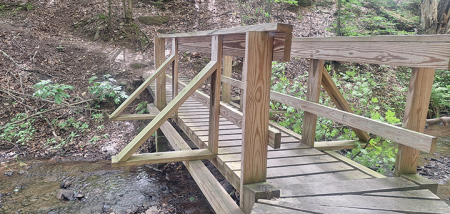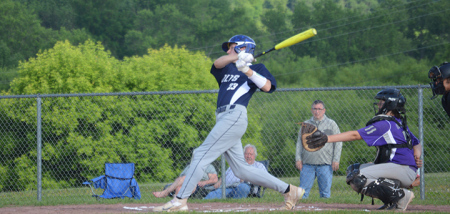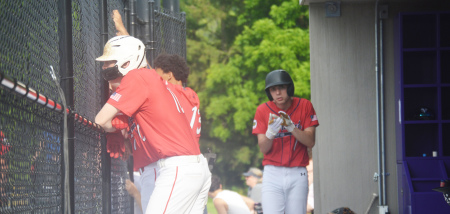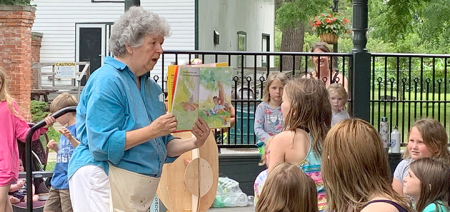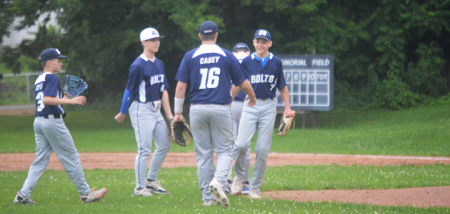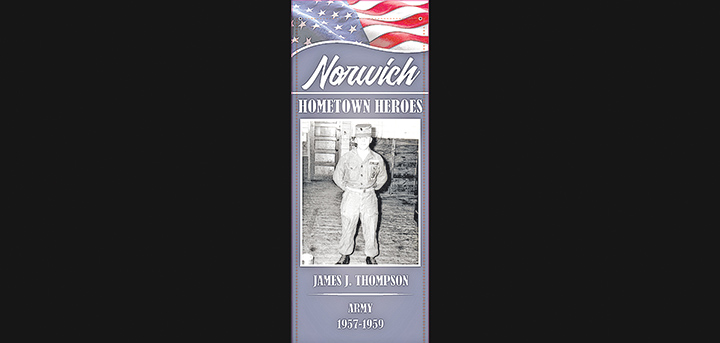How To Introduce A New Cue To Your Dog
Published:
July 13th, 2023
By:
Sarah Genter
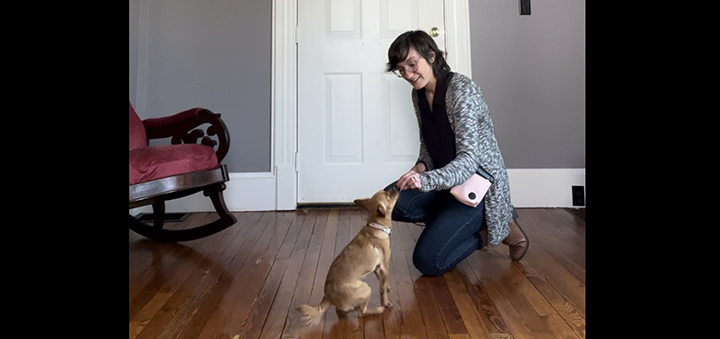 Luring is an easy-to-use method for training many behaviors to your dog. This technique involves using a treat or a toy to lure your dog into the behavior you want, such as a sit or down position. (Photo by Sarah Genter)
Luring is an easy-to-use method for training many behaviors to your dog. This technique involves using a treat or a toy to lure your dog into the behavior you want, such as a sit or down position. (Photo by Sarah Genter)
In my last column, I touched on the different methods you can use in dog training. These include luring, targeting, shaping, modeling, mimicry, and catching.
However, understanding the different methods and putting them into use are two completely different things. How exactly do you use each method to teach your dog a new cue?
For this column, I'm going to focus mainly on luring and targeting, as I think these are the easiest to understand and put into practice. But first, let's look at the basic steps to introducing a new cue to your dog.
The steps to teaching a new cue
When teaching a new cue, it's important to remember that starting off with the cue itself (for example telling your dog "sit" or "stay") won't get you very far. Your dog doesn't understand what that word means yet.
Instead, you want to start off by teaching them the behavior you want before adding in a verbal or visual cue. How you get to the behavior will vary: you might use luring, shaping, targeting, catching, or one of the other methods to get your dog to understand you want them to perform that specific behavior in the future.
But how will our dog know when they're performing the right behavior? By using a reward marker! If you're unfamiliar with clickers, read my column "How using a clicker can make dog training more effective,” published in The Evening Sun on March 30, 2023 to learn all about clickers and how to use them.
When your dog performs the correct behavior, you mark it with a clicker at the exact moment they hit the position you want - such as a sit - so they understand exactly which behavior will earn them a reward. After clicking, reward your dog with whatever motivates them, whether that's a tasty treat, a game of tug, or an enthusiastic "good girl!"
You'll have to repeatedly get your dog to perform the correct behavior, and mark and reward it, several times before they'll fully understand that's what they should keep doing. The time it takes for each dog to figure this out will vary. For example, if you're luring your dog into a sit, over time it will take less movement to lure them into position.
From there you can add in your cue. Keeping with the "sit" example, before luring your dog into position, you would give them the "sit" cue, then lure them into a sit, click, and reward. Now you'll repeat this over and over again to build an association between the word "sit," the behavior of sitting, and getting a reward.
Over time, you'll find your dog beginning to jump the gun and sit down after you give the verbal cue. This is because they've learned that every time you say "sit," you then lure them into a sitting position and then they get a treat. To get the treat faster, they'll skip ahead and sit down on cue rather than waiting for you to lure them.
Congratulations! Your dog has now learned a new cue. From there you can gradually phase out the treats, so your dog is being rewarded on a random basis rather than every single time they perform the correct behavior. Then it's just a matter of maintaining the cue.
Maintaining a cue just means to reward your dog every once in a while for performing a behavior they've learned. Without proper maintenance, your dog might learn that performing a behavior, no matter how well they know it, is pointless for them because it doesn't result in anything. Providing rewards on occasion reminds your dog it's still worth it to perform the behavior on cue, because they might get a treat.
Luring
Perhaps the most common training method, and the easiest to employ, is luring. This method is exactly how it sounds: you use a treat or perhaps a toy to lure your dog into the specific behavior you want them to perform.
For example, to lure a dog into a sit, you would hold a treat in front of their nose, then move it up and backward so it's above their head. Your dog should follow it with their nose, which will make them have to sit down to keep their balance. You can then mark and reward the behavior to show your dog that's what you're looking for. Once they're doing this consistently, you can add in your cue.
You can use luring to teach several other cues. To teach a "down," you could hold a treat in front of a dog's nose, then slowly lower it to the ground. Their nose will follow, and when it reaches the ground you can then move the treat forward along the ground. They'll follow, and will have to lay down for their nose to stay near the treat, which you can mark and then reward.
For some dogs, my own included, they'll work around this by just standing up and walking closer to the treat. In this case, depending on the size of your dog, you can employ this creative technique I learned from binge watching "Me or the Dog."
Sit on the floor with your feet flat on the ground and your knees bent and pointed upward. This will create a little tunnel for your dog. Lure them under your knees, and gently lower your legs so that in order to pass through, your dog must lay down on their belly. As soon as they fully lay down, mark and reward!
I've also used luring to teach my dog how to spin in a circle on cue by luring her in a circle with a treat, and how to go to her bed on cue by luring her to it and marking and rewarding once all four paws are on the bed. If your dog is tall enough, you can even using luring to train them to stay in a "heel" position on walks. It's truly a versatile technique that can be used to teach a whole host of behaviors!
Targeting
Targeting teaches your dog to touch a specific body part, such as a nose or paw, to a specific target, such as a button or a bell.
First you have to teach the dog which body part you want them to use. Imagine you're trying to teach your dog to ring a bell with their nose when they want to go outside. Present them with the bell, holding it close to their nose. They'll want to investigate the new object, and may reach their nose out to smell it. When their nose touches the bell, click your clicker and reward them.
With several repetitions, your dog will learn that ringing the bell with their nose earns them a treat, which will reinforce the behavior. Then you can move on to placing the bell near the door, and when they ring it, mark and reward, and immediately take them outside. Eventually they'll build the association of ringing the bell and going outside, and will begin ringing it when they need a bathroom break.
You can use targeting to train your dog to push buttons that say things like "outside" or "play time" in the same way. Targeting is also a great option to teach behaviors that could also be taught using luring, but that might be difficult due to your dog's size.
My dog Penny is teeny tiny at only six pounds, and I wish I had known about target sticks when teaching her to walk on a leash. I used luring to keep her in a heel position, but the constant hunching over got old quick. If you have a small dog you can teach them to touch their nose to a target stick, then have them follow the target stick on walks, marking and rewarding occasionally. This is so much easier on your back than constantly bending over!
When considering targeting as a training option, think about what your dog can do with their nose or paws, or other parts of their body, and in what instances you'd like to train them to interact with another object.
Shaping
I wanted to briefly touch on shaping, because I think it can be really useful in certain contexts. Shaping involves allowing your dog to behave naturally, but marking behaviors you want and allowing the dog to figure out on their own what will earn them a reward.
With shaping, you usually build up to the behavior you want. For example, if you want to use shaping to teach your dog to go to their crate on cue, you might watch them and use your clicker to mark and reward when they look at their crate. After doing that a few times, your dog now has to take the behavior one step further to earn their reward.
So, you might then wait until they take a step toward their crate before marking and rewarding. Then stick their head in the crate, then place one paw in, and so on. It gets your dog to think about what they're doing and work to figure out what will earn them a treat.
Using shaping in this way can take a long time to teach a single behavior and cue, so it may not be ideal for most scenarios. But there are some cases where I've found it to be a great option to introduce a new cue.
I personally really like to use shaping to teach a dog to "leave it," which teaches a dog to turn their nose away from something, and prevents them from picking something up in their mouth that they shouldn't have, such as clothing, shoes, or anything that may be hazardous to them.
To teach this, I'll hold a treat in my fingers and present it to the dog. Every time so far, the dog has sniffed at the treat, licked it, and tried to nibble it out of my fingers. Don't give up the treat! Just wait. The dog has to figure out on their own what is going to earn them that treat.
Eventually, the dog gives up or gets distracted and turns away from my hand, which is when I click my clicker and present a new treat to reward them with from behind my back. This is crucial; Teaching "leave it" means teaching the dog they don't get to have whatever they were trying to get.
If I tell them to leave the treat, then reward them with that same treat, all I've taught them is that being told "leave it" means "leave it for a few seconds and then take it." Always keep an extra treat behind your back to use as your reward so your dog learns they have to stay away from whatever you've told them to leave.
You can really get creative with shaping to teach your dog new cues that may not work well with things like luring or targeting, such as jumping on cue. Plus, it's a great way to engage your dog and work their mind, which is just as beneficial to them as physical exercise.
I hope this information helps you to understand how to start using the various training methods to teach your dog new cues. As always, if you have any questions about dog training, please send me an email at sgenter@evesun.com for the chance to have your question answered in a future column. As I am still earning my certification, I may wait to answer some questions until I have the proper training and knowledge to provide an accurate response.
Author: Sarah Genter - More From This Author
Comments


